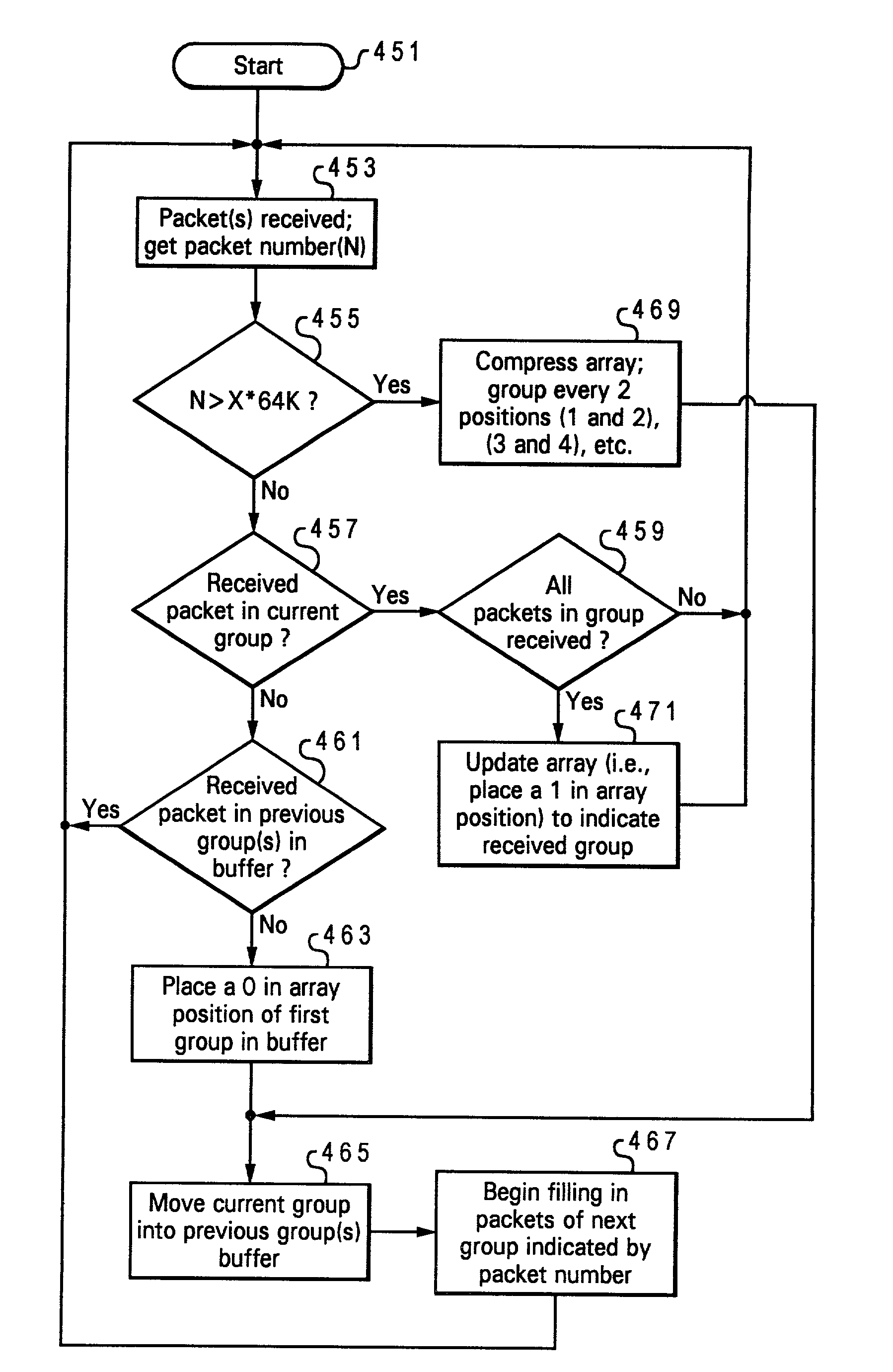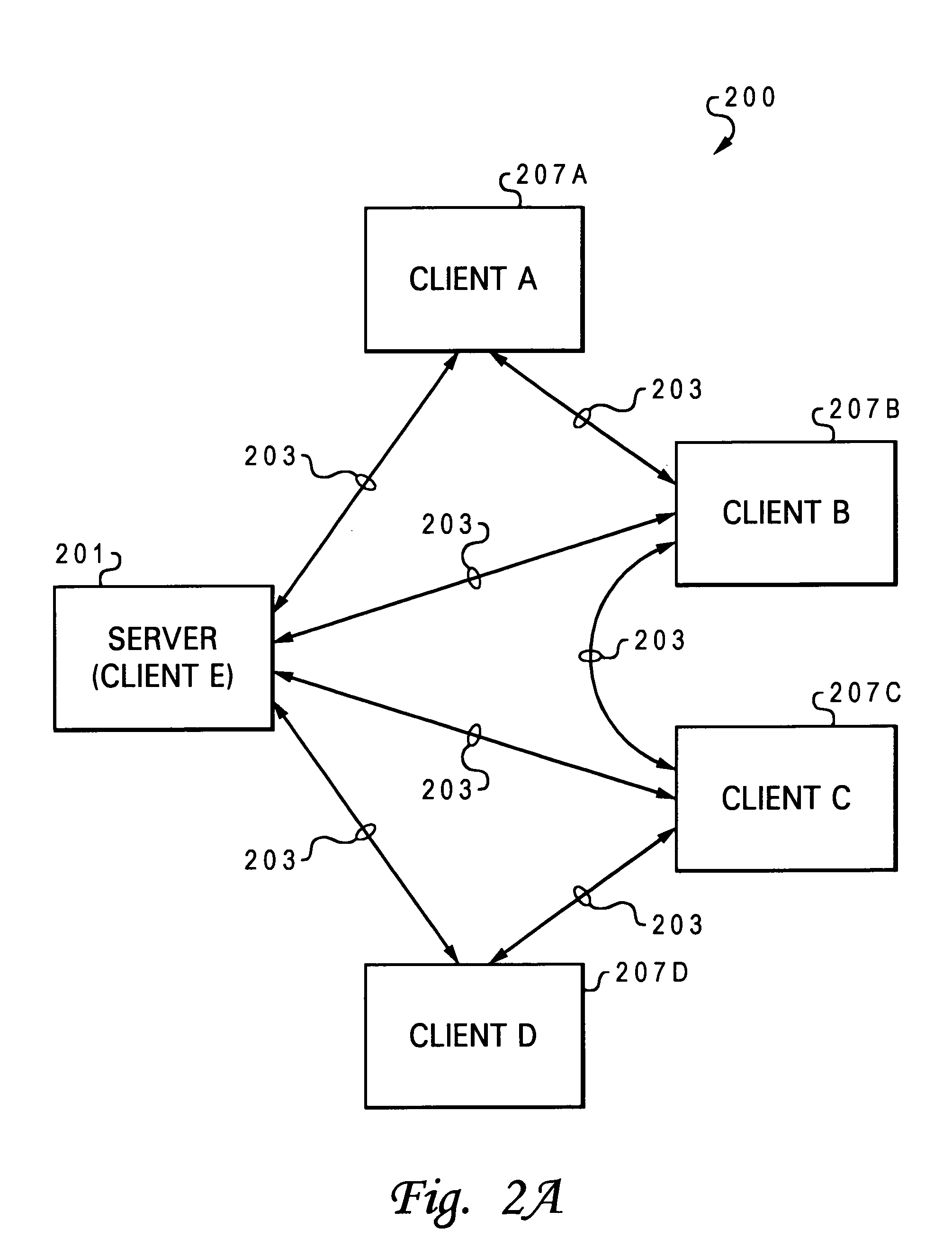Method and system of tracking missing packets in a multicast TFTP environment
a multicast network and packet tracking technology, applied in the field of multicast network data transfer, can solve the problems of sending the lost packet to retransmit the lost packet, many network routers can only handle a maximum transmission unit size of 1500 mbytes, and achieve the effect of reducing the number of re-requests to the network, reducing hardware or space costs, and substantially eliminating the memory requirements of sequential packet data storag
- Summary
- Abstract
- Description
- Claims
- Application Information
AI Technical Summary
Benefits of technology
Problems solved by technology
Method used
Image
Examples
Embodiment Construction
[0034]In the following detailed description, like parts are indicated by like numbers. Furthermore, the first digit of each reference numeral generally relates to the figure wherein the primary description of that reference numeral appears. For example, 1xx would have its primary description in relation to FIG. 1, 2xx in relation to FIG. 2, 3xx in relation to FIG. 3, and so forth.
[0035]With reference now to the figures and in particular FIG. 1, there is illustrated a data processing system within which the various features of the invention may be implemented. Data processing system 100 comprises several major components including processor (CPU) 101, memory 105, I / O devices 109, and network interface 111. These major components are generally interconnected via system bus 102. Memory 105 is connected to the other components through memory controller 103 and, likewise, I / O devices 109 are connected through I / O controller 107. As illustrated, network interface 111 includes two ports, t...
PUM
 Login to View More
Login to View More Abstract
Description
Claims
Application Information
 Login to View More
Login to View More - R&D
- Intellectual Property
- Life Sciences
- Materials
- Tech Scout
- Unparalleled Data Quality
- Higher Quality Content
- 60% Fewer Hallucinations
Browse by: Latest US Patents, China's latest patents, Technical Efficacy Thesaurus, Application Domain, Technology Topic, Popular Technical Reports.
© 2025 PatSnap. All rights reserved.Legal|Privacy policy|Modern Slavery Act Transparency Statement|Sitemap|About US| Contact US: help@patsnap.com



